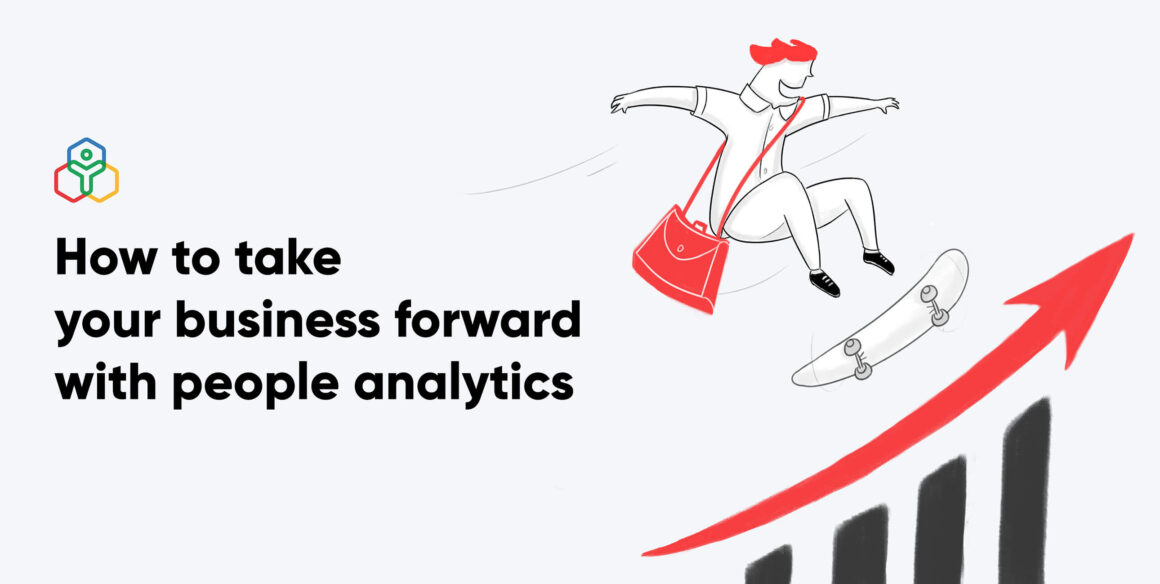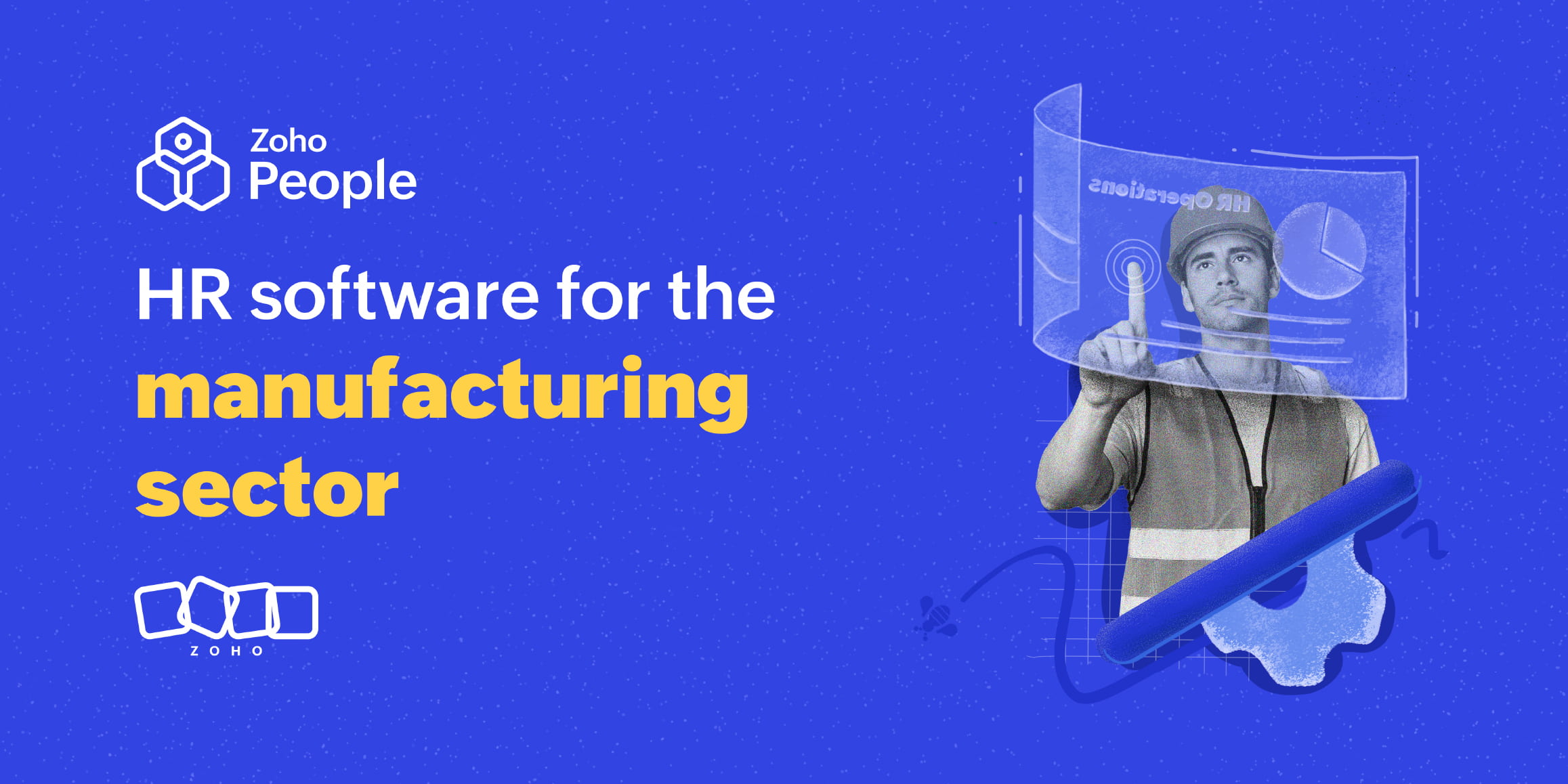- HOME
- HR insights
- How to take your business forward with people analytics
How to take your business forward with people analytics
- Last Updated : November 18, 2025
- 2.4K Views
- 8 Min Read

If you’re having people problems at your workplace and you’re unable to determine the cause, you are most likely in need of workforce analysis. You might be obscured with a whopping number of metrics that describe what’s happening to your workforce, rather than telling you why it’s happening.
What are people analytics?
People analytics, also known as workforce or HR analytics, is the method of collecting and analyzing quantitative and qualitative people data such as absence figures, job performance, and benefits and correlating them to overall business performance in order to optimize the effect that employees have on business outcomes.
Why People Analytics?
A survey from Deloitte states that only 32% of companies are ready for people analytics, meaning that most organizations lack the accurate and consistent data collection necessary to utilize them. What advantages do these businesses stand to gain from adopting this HR strategy?
Strategic insights: HR is in a phase of transformation away from focusing on process, and towards becoming a more people and business-oriented field. A crucial component of this transformation is the switch away from reporting data, and towards useful analytics that connect multiple data points, visualize patterns, and drive strategy. This shift promises to provide more predictability by highlighting future trends and disruptions so that you can stay prepared.
HR Agility: In a recent survey by Deloitte, nearly 94% of HR leaders say that agility and collaboration are critical to their organization’s success. If HR aims to be agile, leveraging analytics should be a priority. What are the outcomes of your various HR practices? Where do employees need your attention most? HR analytics will be the key to measuring HR needs and making smarter people decisions.
Business success: The success of a business depends on its people. To determine the value of employee data on a business’ success, HR needs to be able to talk numbers. For example, HR departments can use data from training and onboarding to analyze the potential impact of recruitment on business outcomes.
9 ways people analytics can help your business grow
#1 Proactively identify problems:
Wouldn’t it be great to address employee issues before they develop into workplace problems? Identifying the root cause of issues early-on can give you an advantage in dealing with them. For instance, you can detect when employees are in danger of leaving the company.
Suggestion
Analyze across different factors like satisfaction levels, the latest evaluations, and tenure to identify employees that pose a flight risk. Now that you know which employees are a flight risk, determine the root cause. If it’s because of a high workload, possible solutions include employing more resources or improving your processes.
#2 Track your success rate
Workforce design is shifting toward team orientation. The workforce is seeing an increase in millennials and Generation Z workers. With the new generation come changes in employee expectations and needs. People analytics can help identify ways to adapt to those changes. You could use existing employee data to conduct an analysis of HR practices and their success rates. This can lead to better HR practices that meet evolving employee expectations.
Suggestion
If you’ve set a new benefits policy, analyze if it has increased the retention rates. See how your benefits policy affects the cost of your business.
#3 Track history
It’s just as important to observe the trends of the past as the trends of the present. Data matures over time as business scenarios evolve. Finding the relationship between past and present trends can lead to better decision-making in the long-term.
Suggestion
Using people analytics, monitor and analyze risk factors that happened during particular time periods and devise feasible plans to avoid shortfalls.
#4 Increase retention
47% of HR professionals have named employee retention and turnover as a top challenge in the 2018 SHRM/Globoforce employee recognition report. Losing a top performer or failing to determine the reason for turnover can be detrimental to an organization’s health. Using different methods for calculating retention lets you discover potential areas of risk and can help you focus on improving HR practices.
Suggestion:
You can start measuring the resignation rates for each department, location, and role to find out why people are leaving. Are they top performers, managers, or new employees? Use detailed metrics to analyze across age, tenure, performance, and compensation.
A correlative analysis will provide comprehensive retention statistics. For example, if the overall turnover rate is 12%, 2% are top-performers, 8% are new employees, and 2% are employees with over 5 years tenure, which group should you focus your attention on? As the stats show that the highest turnover is from new employees, you can focus on determining solutions to increase the retention of new hires.
#5 Hire the right people
Optimizing people analytics in every stage of the recruitment process can elevate the quality of your hires and reduce the time of your hiring process. Studies reveal that recruiters spend only 6 seconds on their initial fit or unfit decision and spend 80% of the resume review time on six data points: Name, current title & company, previous title & company, previous position start and end dates, current position start and end dates, and education. This process often overlooks potential resources who could add value to the business and stay longer.
Suggestion:
- Use your existing data, like performance or the competencies and skill-sets for a particular job and predict the ideal traits a potential hire should or shouldn’t have. Relying on automatic decision support gives you the numbers that objectively identify the best characteristics that fit your business.
- Perform an analysis of the different talent pipelines that attract the most relevant and quality candidates and invest in the right sources.
- To improve candidate experience, give and ask for feedback even if you are not hiring a candidate. Evaluate feedback and check for opportunities to enhance your hiring process and candidate experience.
#6 Tap into potential and performance
A decline in performance affects productivity and, in turn, your business’ revenue. An employee’s performance–good, bad, or mediocre–relies on a multitude of factors. Your presumed high-potential new hire might not be performing up to your business goals, and your gold-star performer might be on the verge of burnout. Why could this be? A dreadful onboarding process, lack of a skilled mentor, or less opportunities for growth are all potential possibilities. People analytics can assist in decoding performance, giving you opportunities to develop your evaluation methods.
Analyzing different variables can help construct a positive evaluation system. If there’s a lack of feedback that’s restricting an employee’s performance, then you can enforce a continuous, 360-degree feedback system including self-appraisal where employees can showcase their talents. If it’s because of inefficient training, then you’ve got to improve your training program with good facilitators and better resources. Having the combination of the right skill sets and personalities is essential to a company’s success. By eliminating the trial and error method, analytics will refine the process and reduce skill gaps.
Suggestion
- Get the statistics on your employees’ potential versus their performance. Identify top-players and people who require training.
- Check for consistency in performance across appraisals and goal completion, and analyze gathered feedback.
- Analyze rewards, salary hikes and promotions with performance levels to know if your effectively rewarding performance.
#7 Create effective learning and development activities.
Corporate learning and development is taking a new pace with the rise of online learning.
L&D is transforming from a training center to a commonly accessible space. With analytics in hand, you can check if your company’s L&D program is effective, what learning methods attract employees, their pace of learning, and more.
Suggestion
- You can gather feedback about your training programs through a feedback survey and analyze the data. Ask precise questions about the course content, effectiveness, and so on. Develop different surveys based on experience. With these insights you can create courses that cater to the needs of inexperienced and an experienced employees alike.
- Check for employee engagement levels during the course. Perform a continuous assessment of the impact of your learning initiatives on employees’ performances and how long they are taking to completely work up their skills. This will help you tailor your learning program, helping you improve the skills of your employees.
#8 Reinvent employee engagement
Engagement is a major concern in the HR environment. It’s important to remember that
employee engagement is a two-way street, and that it’s not a goal, but a journey. Consistently analyzing engagement levels, and specifically measuring employee sentiment, performance, and experience will yield decisive insights. When the numbers indicate your turnover is high or employees have negative work experiences, your overall engagement measurement will be low, as a consequence.
Suggestion
Gather data from pulse surveys where each survey focuses on one particular variable that you’d like to research. For example, one survey can focus on the employee experience, another on growth opportunities, and another can cover role-based issues. This will present you with a crystal-clear idea of what’s happening with your workforce.
With enough data, you can develop strategies and programs that build a thriving work culture where employees can be their true selves, and go the extra mile.
#9 Improve leadership
In a dynamic workspace, it’s important to know how employees are performing. We are moving away from rigid hierarchies, and towards a broad network of interconnected teams with a flat structure. Businesses need to find and develop leaders who can thrive in times of change, lead creatively, and share knowledge.
Suggestion
- Analyze the qualities of teams under each manager. This will allow you to identify managers with highly engaged teams, with top-performers, and high output volume. Understanding the leadership qualities driving these statistics will help you define your business’ successful leadership traits.
- Today’s leaders expect to be in a continuous learning environment. Identify skill gaps, predict your future needs, and craft leadership programs that actually work.
Now that we know how people analytics can help you grow your business, along with a few suggestions, let’s look at the challenges in implementing them, and how to get successful results.
Challenges in adopting people analytics:
- Lack of HR software supporting analytics
- Connecting siloed data from multiple systems (like HR, IT, and Finance)
- Determining the right business questions to ask
- Connecting relevant data to form meaningful patterns
- Identifying trends and predicting outcomes
- Lack of technical expertise
A simple guide to start with workforce analytics
Start with “why”―ask the right business questions.
No two organizations are the same. That means the questions you need to ask will also be different because your business goals will be different. Once you identify those goals, you can ask the right questions. Everything will fall into place from there.
Gather. Analyze. Derive insights.
It’s not about how big your data source is, but how well you use it. Choose the right technology that can integrate with finance or IT systems. If you’re concerned about affordability, an HRMS supporting analytical features offers a competitive advantage.
Collaborate with technology experts to analyze different patterns and trends. When you get an overall idea, drill deeper and segment your statistics into departments, locations, and performance to correlate with business outcomes like sales, costs, customer satisfaction. This analysis will help in leading you to a comprehensive understanding of your workforce.
Turn insight into action and track your success.
Now that you have the statistics to back up your decision-making, look for cases in which problems can be solved using your data. Experiment with different solutions, use “what if” analysis, and work out tangible responses. Create a well-defined action plan, implement, and evaluate it. Track your progress and come up with new ideas if your current plan isn’t working.
10 must–have HR metrics
1. A monthly hiring vs attrition report will help keep tabs on your hiring pace and retention rates.
2. Time to hire can give insights on which role takes longer to fill and how to improve your hiring process.
3. Cost per hire helps in calculating ROI and making better investment decisions.
4. Early turnover will help you analyze the reasons why new hires quit so that you can improve processes.
5. Using revenue per employee you can measure your employees’ productivity.
6. A Performance vs potential report identifies top performers and employees with training needs.
7. The LOP & overtime metrics aid in error-free payroll processing and determine ways to reduce costs.
8. Absence reports give insights into attendance patterns, ensuring that working hours are not abused.
9. Feedback reports can help to understand the reasons for employee behavior and improve your processes.
10. Appraisal reports help identify employee performances in the long-run.
Conclusion
People analytics are a business game-changer. Using profound insights about your workforce, you’ll be able to find new ways to improve your business outcomes, monitor how your employees respond to them, and find out what they need and how best to provide it to them. With artificial intelligence (AI) gaining more traction, there is an opportunity to raise the bar and get to know your people better.
More and more corporate giants are employing people analytics and are getting better outcomes as a result. That means people analytics are no longer a luxury, but a necessity for businesses of all industries that hope to remain competitive in the long-term.
 Princy
PrincyProduct Marketer at Zoho People.


